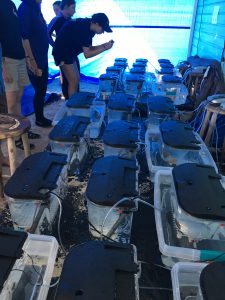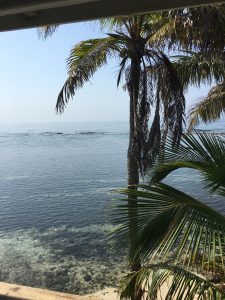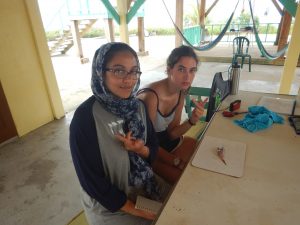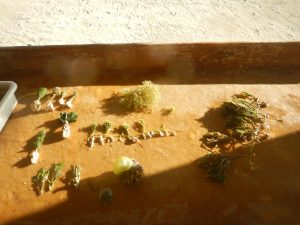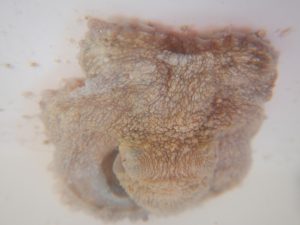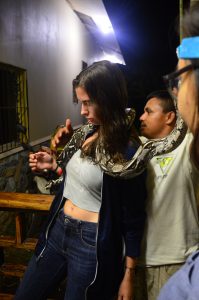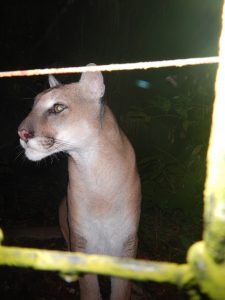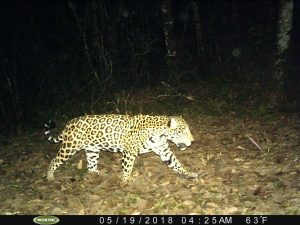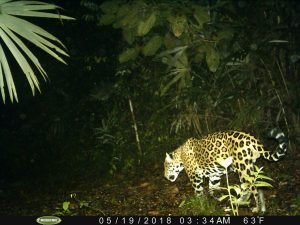Rainforests and coral reefs have relatively similar ecologies. Both exist in poor nutrient conditions, wherein most of the nutrients are housed in the biotic as opposed to the abiotic. Both display disproportionate levels of diversity when compared to their total area—coral reefs cover only 0.2-1% of the seafloor, but sustain 25% of all marine species. Similarly, more than half of the world’s species of plants and animals live in the rainforest, which covers about 2-6% of the Earth’s surface. This means a very high proportion of Earth’s organisms depend on these two ecosystems alone, making deforestation and coral bleaching an even more urgent problem. Additionally, both of these ecosystems are distinctly tropical, which poses the question of why tropicality encourages and fosters biodiversity.
The answer may lie in the overlapping factors that allow both coral reefs and rainforests to provide for such drastic biodiversity. The lack of nutrients in the soil or water means nutrients are in the organisms themselves. In the rainforest, these nutrients are cycled around as decomposers extract nutrients from leaf litter that coats the rainforest floor. This means that every aspect of the nutrient cycle is dependent on organisms, allowing for many different niches of decomposers, producers, and consumers. In the reef, nutrient cycling is done by corals and sponges and other organisms, again creating niches for new species to occupy and providing nutrients to the entire ecosystem without relying on abiotic factors. This abundance of niches is important, as it encourages speciation.
New species form when a new role in the ecosystem opens up, and rainforests and reefs are constantly creating new niches and roles. This is because both have many different parts and portions that mean an organism can be doing the same thing as another, but in a different area, and so competition does not occur. The rainforest, for example, is divided into the emergent layer, the canopy, the overstory, the understory, and the forest floor. Each of these areas receives a different amount of sunlight and so sports a different ecology, which means each layer can be exploited by different organisms. This means that in only one square meter of rainforest, species can exist and develop on each layer without competing with each other, thereby rendering this one patch of land a lot more productive and biodiverse than in a savannah, tundra, or other ecosystem. Similarly, the reef is also divided into different layers, like the fore reef, the back reef, and the reef crest. Each of these layers presents different niches that do not overlap, and encourage speciation.
Another important factor is the tropicality of these ecosystems. The tropics receives more sunlight per square meter than any other ecosystem on Earth. This means that photosynthetic organisms in the tropics receive more energy than any other, and this energy is used and distributed throughout the ecosystems they are a part of. Every organism, directly or indirectly dependent on the photosynthetic foundation of these ecosystems, benefits from the energy of the sun, which in the tropics is abundant and strong. Additionally, note that both these ecosystems do in fact sport a photosynthetic keystone species or group of species that supports all other organisms. In the rainforest, this is the trees and plants that provide shade, habitat, food, and nutrients. In the reef, this is the corals themselves, which also provide habitat, food, safety, and nutrients. Deforestation and coral bleaching directly impact these photosynthetic foundations, and that is why they are so dangerous to the continued existence of these vital ecosystems.
This biodiversity was apparent to me from the first rainforest trail we hiked to the last patch reef we swam in. It was amazing how no matter where you stopped and observed, you could find dozens of species coexisting. Of course, there were differences—for one, the rainforest’s biodiversity can be communicated through sounds, and standing and listening to the hum of the forest was one of my favorite things to do. The reef is silent, but still sports similar levels of biodiversity despite the lack of communication. In both ecosystems I was most fascinated by the apex predators, perhaps in typical human fashion. The snakes and big cats of the forest captivated me, while the sharks and rays represented them in the reef. One of the most striking moments for me was snorkeling in one of the patch reefs, on a day where the water was crystal clear. Beneath me were schools of fish moving in harmony, and huge colorful parrotfish unlike anything I’d ever seen before. In the rainforest, larger creatures tend to be hidden and more difficult to find. But the stand-out moments for me was when we did find them—like the boa constrictor, or the jaguars caught on our camera traps, or the parrots and vultures that flew above us.
My favorite moment is difficult to pin down. The moment we saw the boa and Kristen screamed, the climb up the Mayan ruins of Caracol, or that first time when we all screamed, huddled around a laptop as the jaguar’s distinctive coat flashed across the screen for the first time. The hermit crab race, sitting at the edge of the pier while a tropical storm brewed above me, or every single golden sunset I watched settle over the Caribbean sea. The sea itself could be a favorite moment, as I’d never before seen such a clear turquoise. The specific moments of finding myself knee-deep in the rainforest and absolutely loving it, or maybe on the night hike, when we turned off our lights and I looked up and saw the stars, those tropical night-time stars that I can never seem to get used to. Total darkness in the Las Cuevas cave, or the look of the stalactites shimmering above me. All of these could be listed as my favorite moments from the trip.
My least favorite thing is likely the hundreds of bug bites I acquired, which still haven’t gone away. As far as expectations, I don’t think I really knew what to expect. The information I had on the trip itself wasn’t extensive, so I assumed it would be similar to when I visited the Amazon or the Caribbean with family, on vacation. Of course, it was nothing like a vacation. We were up from dawn past dusk, collecting data and working all day. But even then, the places we stayed at and the friendships formed made it almost seem like a vacation. If I had ever set expectations, they would’ve been exceeded. The amount that I learned about myself, my career, my interests, my existential questions, and ecology itself is unparalleled in any other course I’ve ever taken. One of the most important things I learned is what it really means to be a field researcher. You’re not spending your life in nature, you’re collecting data for weeks or months and then returning home, and doing lab work. It’s a bit of a dual life that I think fits my aspirations well. I also learned that I’m not as weak as I thought I was. As someone who didn’t start out loving nature, being capable in the outdoors is something I had to learn over the years. I had always doubted my abilities, but this trip taught me that I am in fact capable of living the more primitive, less wasteful lifestyle that I’d always romanticized. And lastly, this trip answered a lot of questions for me about humanity and our place in nature. We are animals, but we operate outside of natural ecosystems. We are an invasive species, eating and consuming without limits just like the lionfish. This is not necessarily our fault—any species in our position would do the same. But we have the advantage of having morals and ethics, allowing for some vague grasp of what is wrong and what is right. Because of this, we have a responsibility and a drive to protect the things we come from. It is sometimes difficult to remember every single thing around us comes from nature, that even what is man-made originated from the soil, in the ground, or in the sea. If anything, we should protect nature for ourselves. For me, though, nature is the closest thing to a spiritual home that I have found. This trip has showed me exactly what path I must take to fight for and reside in nature. A long time ago I resolved to reject the wasteful, selfish aspects of cities, and to turn to more abstract things like art and music and nature for comfort. These things had always been something on the side, something I could never rely on in any realistic, formulaic plan for my life. This trip is one of the many puzzle pieces that have helped me realize it’s totally possible for me to integrate my passions into my career. And this is something that will stay with me, something that in twenty years I can list as one of the major factors that pushed me into a lifestyle I can condone and not condemn—part one of my lifelong quest to understand the beauty of this planet and every single thing within it.

